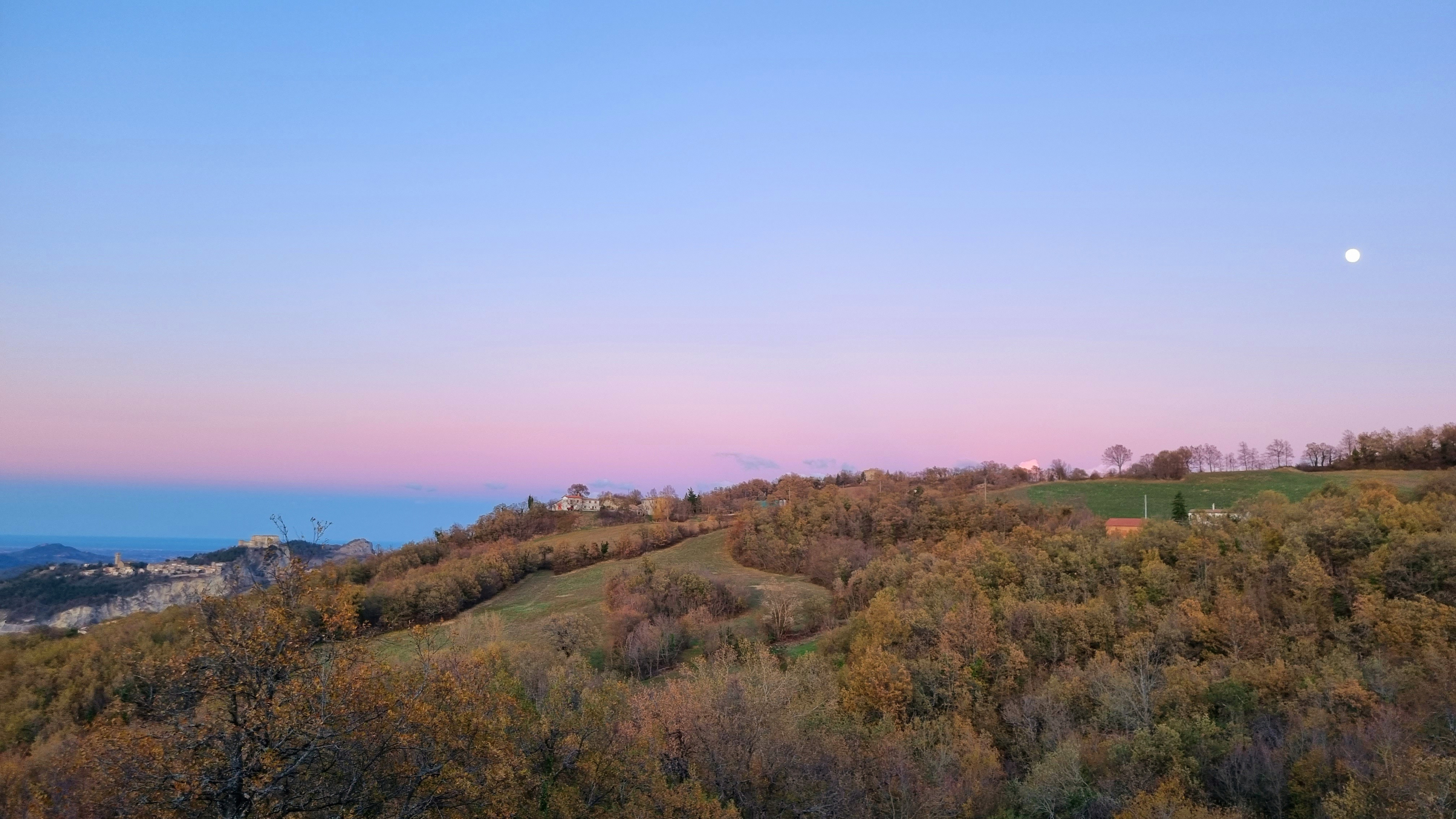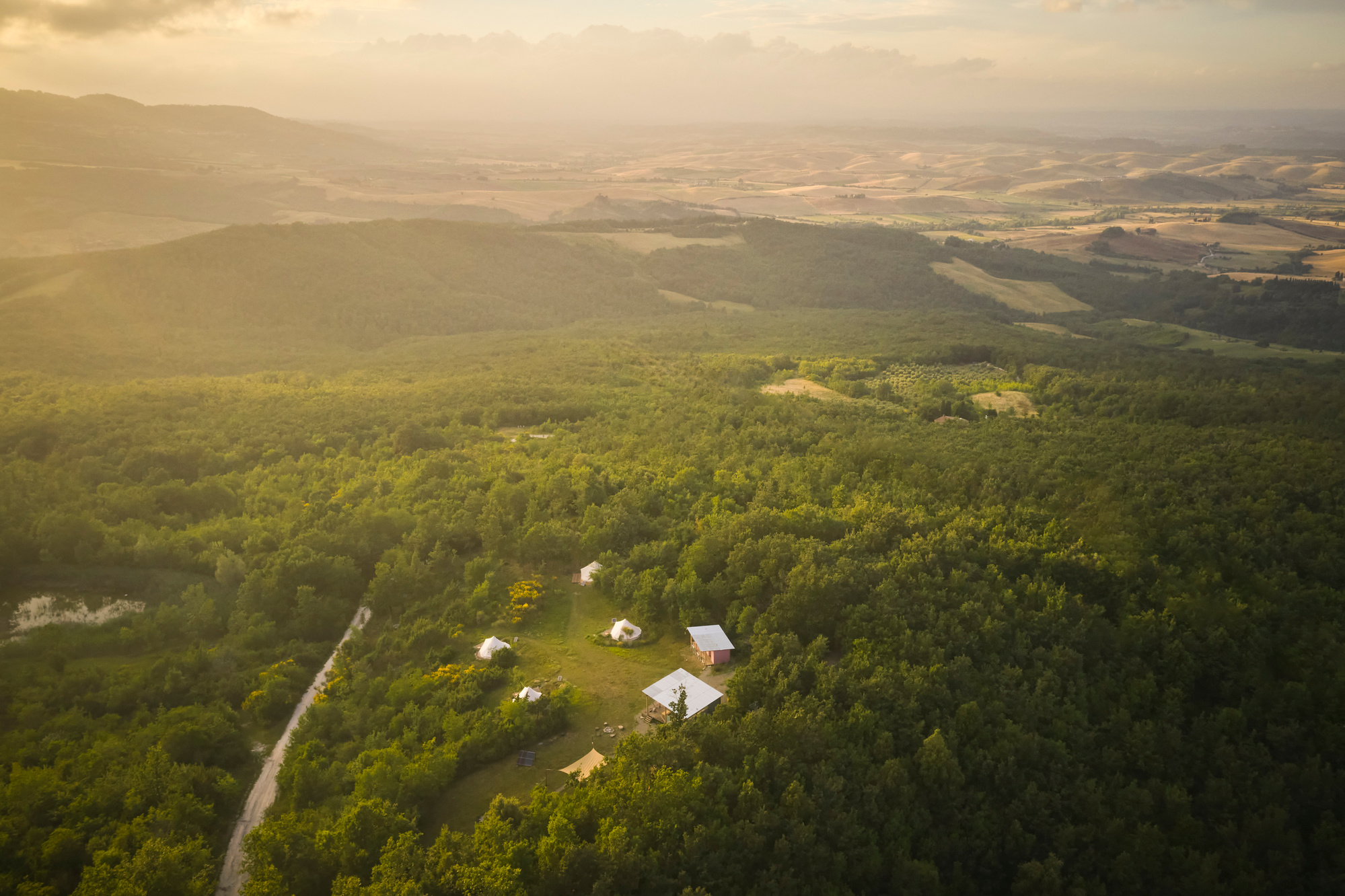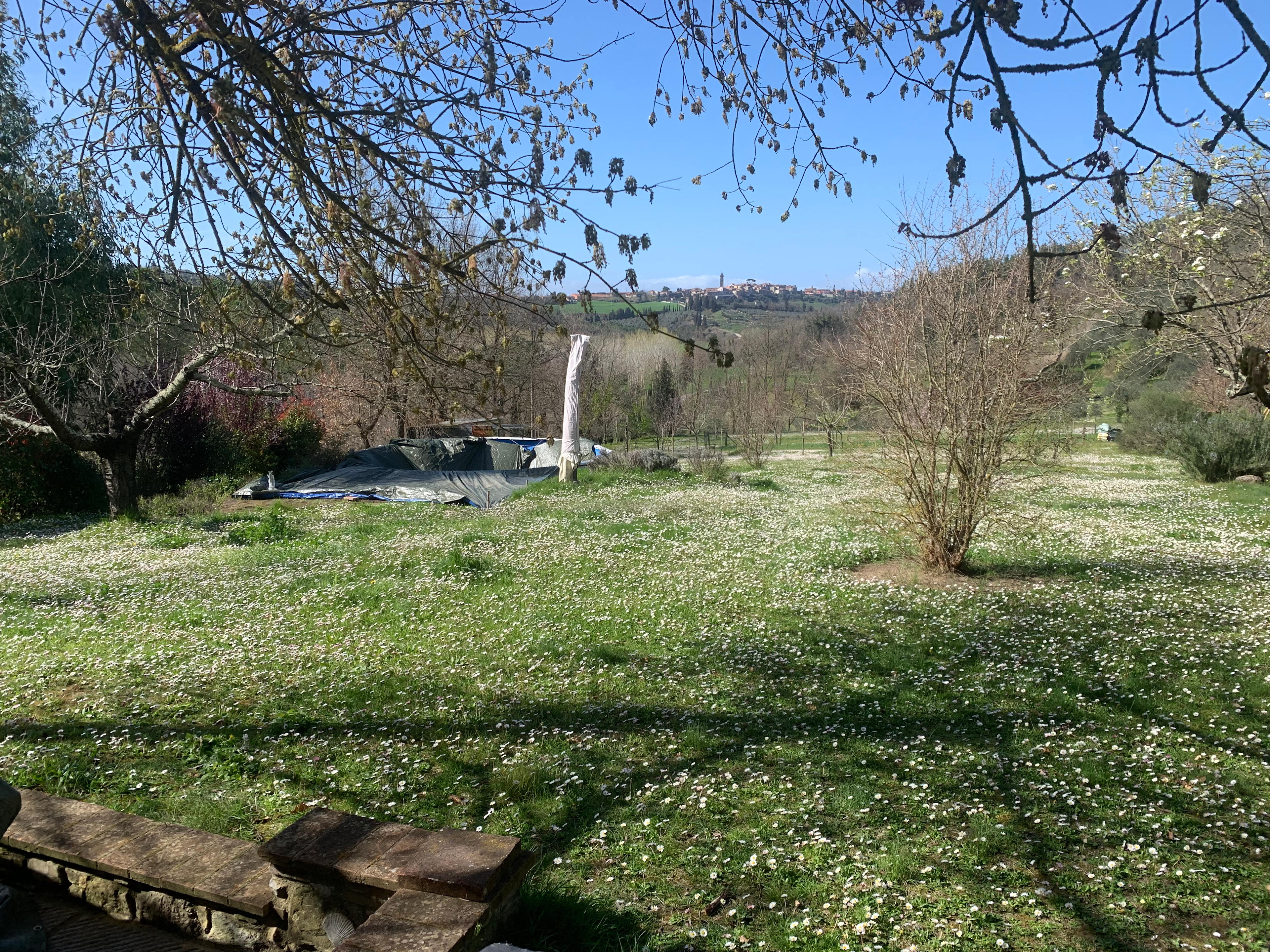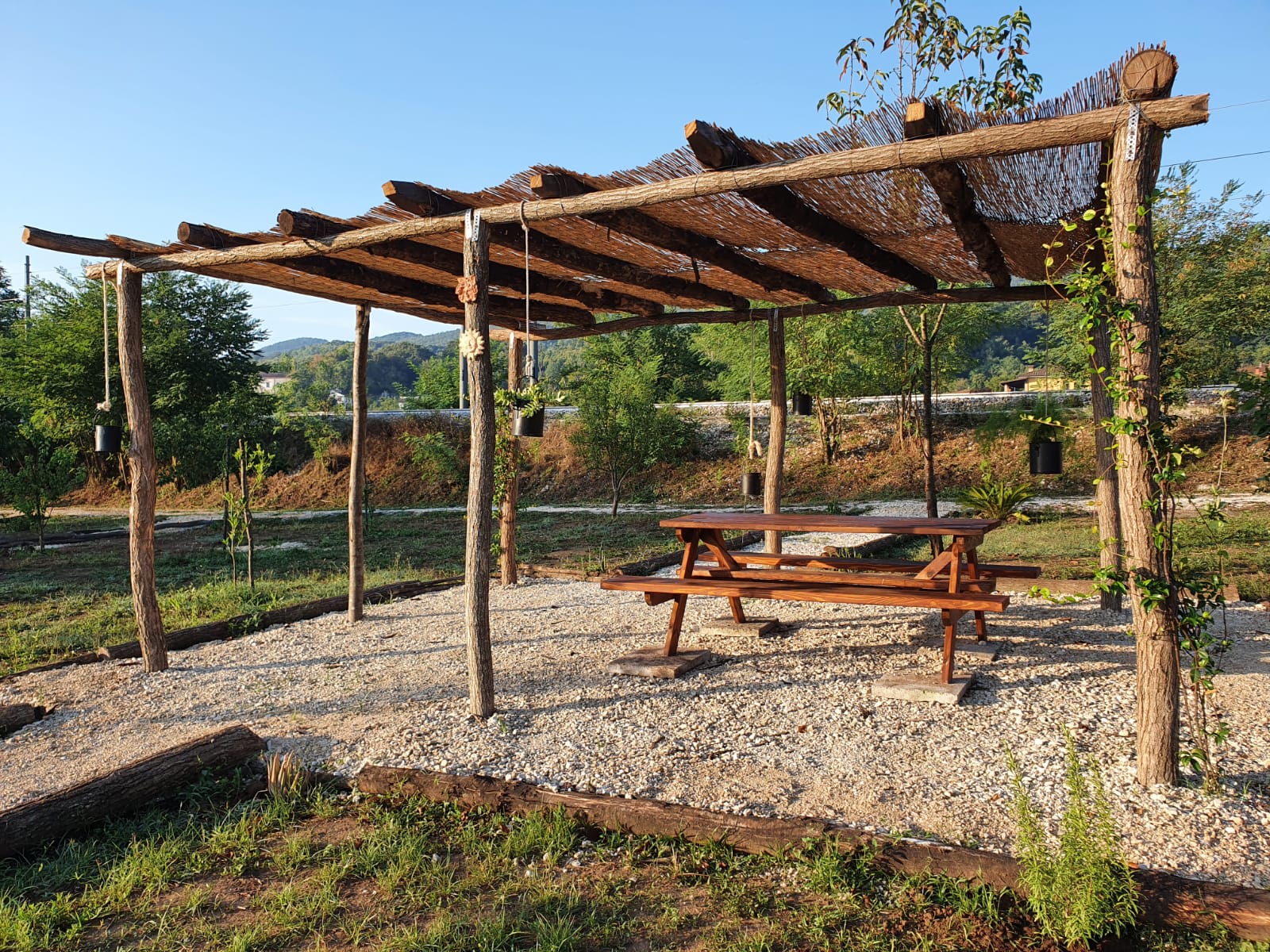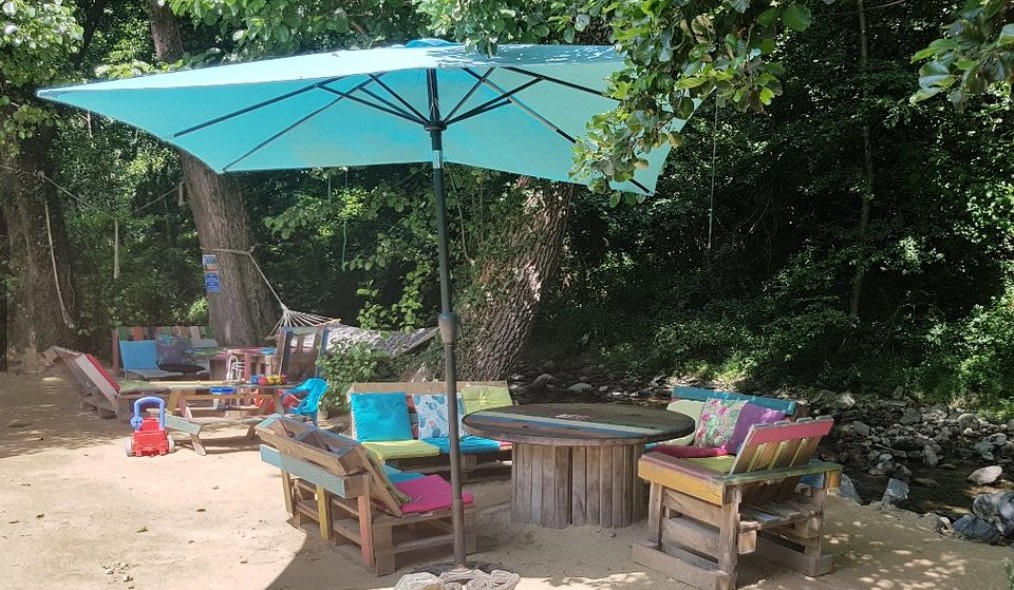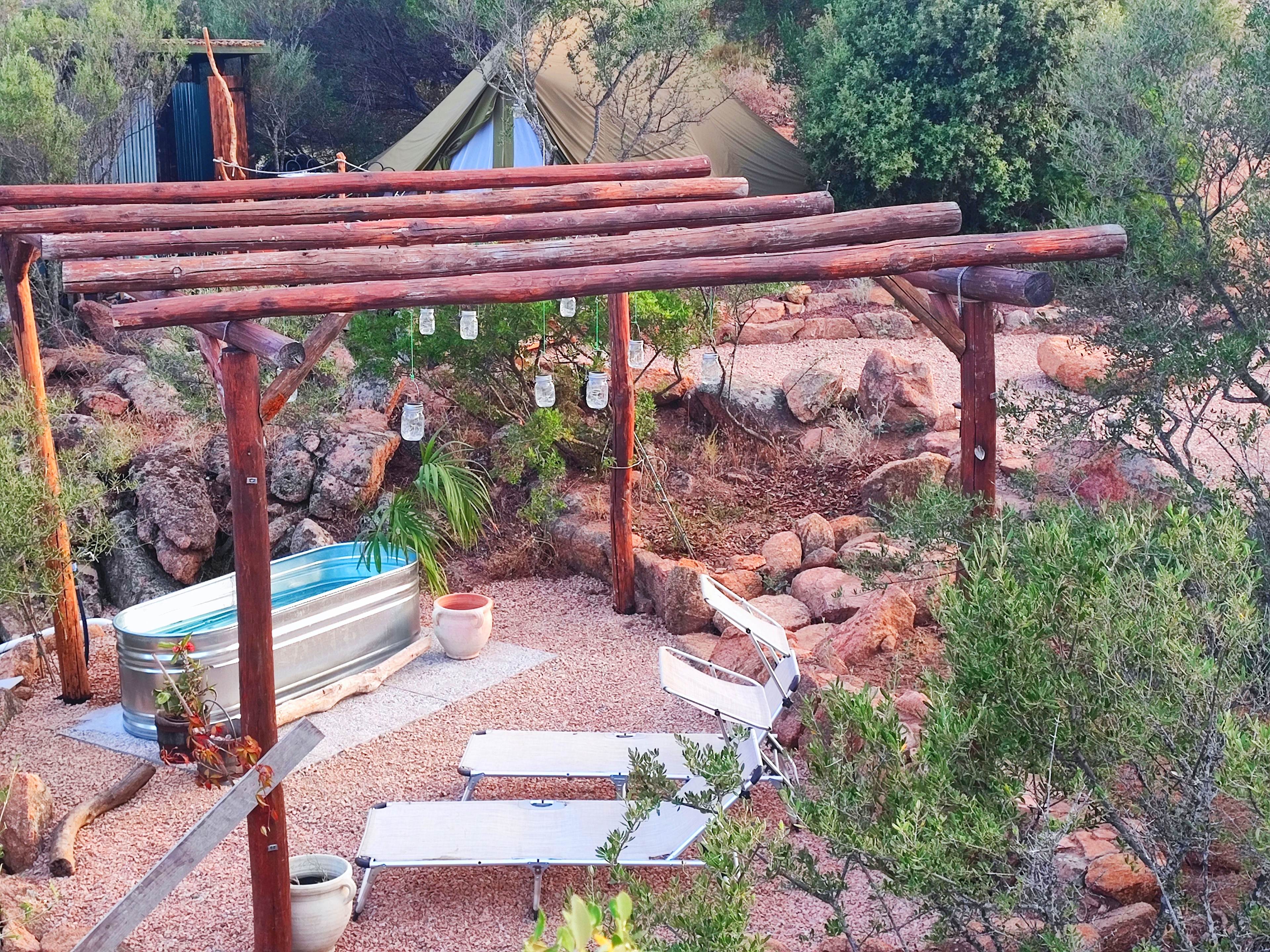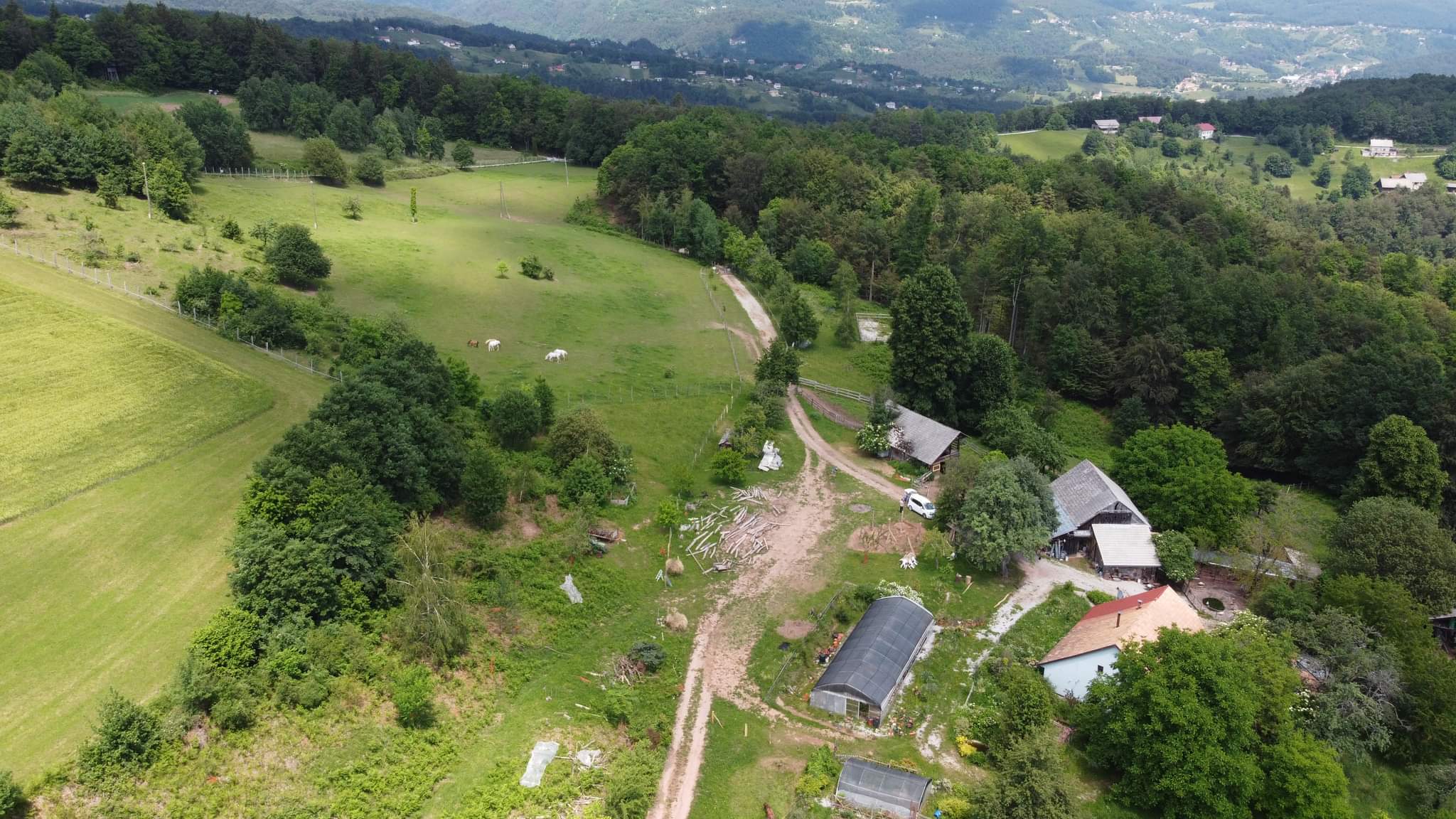Il Collaccio is what estate agents would call
‘marvellously appointed’. Hidden deep in
the valleys of the Umbrian hills, where the
villages are so out of the way and ancient
that you half expect a Roman legionnaire
to come marching up the road and hail you
in the name of Caesar, this agriturismo site
lies across the hills from the pointy little
village of Preci and keeps a wary eye up the
valley for the distant approach of Caesar’s
renegade legions.
Like a number of Italian agriturismo sites,
this is a complex, which combines a small
family-owned truffle farm with a modest
hotel and restaurant, a stunning pool, some
basic chalets and cabins, and plenty of
terraces for campers, caravans and tents.
To be honest, tents are in the minority.
However, the site is so steep that once
you’re settled into your little terraced bolthole,
you can quite easily forget all about
the two-wheelers behind you and just enjoy
the peace and quiet.
The site’s right on the doorstep of the Parco
Nazionale Monti Sibillini, which is slapbang
in the middle of Umbria’s heavily
wooded gorges and fairly serious Appenine
mountains. At just under 2,500 metres, the
highest of them, Monte Vettore, commands a
bit of respect and certainly isn’t something
you should undertake wearing a pair of
trainers and a mac that folds up into its
own little pocket.
You can get a sense of the scale of things by
taking the road up from Visso beyond the
tree line and onto a broad, shallow plateau of
rocky meadow, at the end of which the town
of Castelluccio pricks the skyline. Carry on
over the ridge and there’s a 1,500-metre-high
mountain pass on Vettore’s southern flank
that can eventually bring you back in a loop
to Preci, via the comely town of Norcia. It’s
a great little taster menu of the à la carte
delights that Umbria has to offer.
If it’s Italian heritage you’re after, then you
can always call in at the medieval town of
Spoleto, which claims yet another of Italy’s
‘finest’ cathedrals – though this time the
boast holds water. Holy water at that. The
campanile was built from Roman remains,
the bulk of Spoleto’s duomo was built
around ad1200 and the portico was added
during the Renaissance.
Whereas so many Italian cathedrals have
been tinkered with over the years – with
their Romanesque façades tarted up with
Gothic bling – this mishmash of styles is
a surprisingly pleasant success. Inside it’s
cool and white, with some wonderfully ornate little chapels at the back if you
feel like a quiet word with ‘him upstairs’.
Spoleto itself is a more ‘lived-in’ town than
the rather pickled and preserved touristy
spots like Orvieto. The shops are aimed less
at passing travellers eager for a souvenir
and more at the locals’ ironmongery and
haberdashery requirements. So other than
the narrow, twisty cobbled streets leading
up to the duomo, it’s not the prettiest place,
but at least it’s authentic 21st-century Italy.
Elsewhere you’ll find the throwbacks to
Italy’s darker and rockier past. This is the
land of fortified towns built into the sides
of hills, their defences telling you something
about how precarious existence was for
much of Italy’s history.
From the time of Caesar, right through
to the Allied campaign up the spine of
Italy in 1944, these places have seen some
action. Thankfully, the locals are far from
defensive and you’ll get a cheery wave from
the Baldoni family at Il Collaccio when you
arrive. And, if you’re lucky, they might even
treat you to a truffle.
